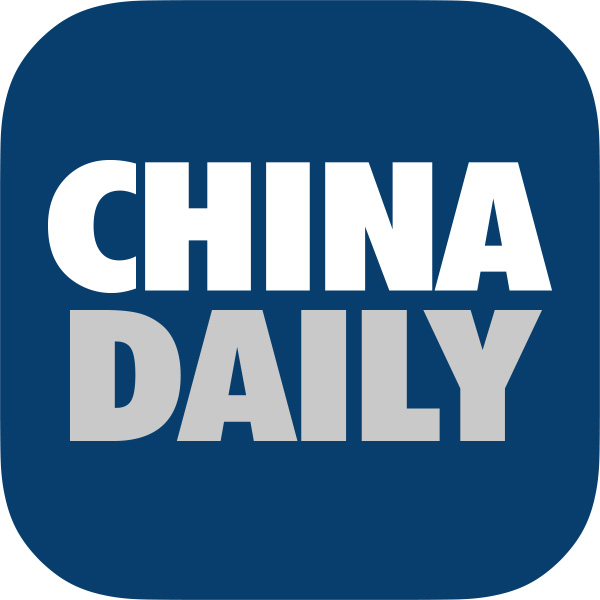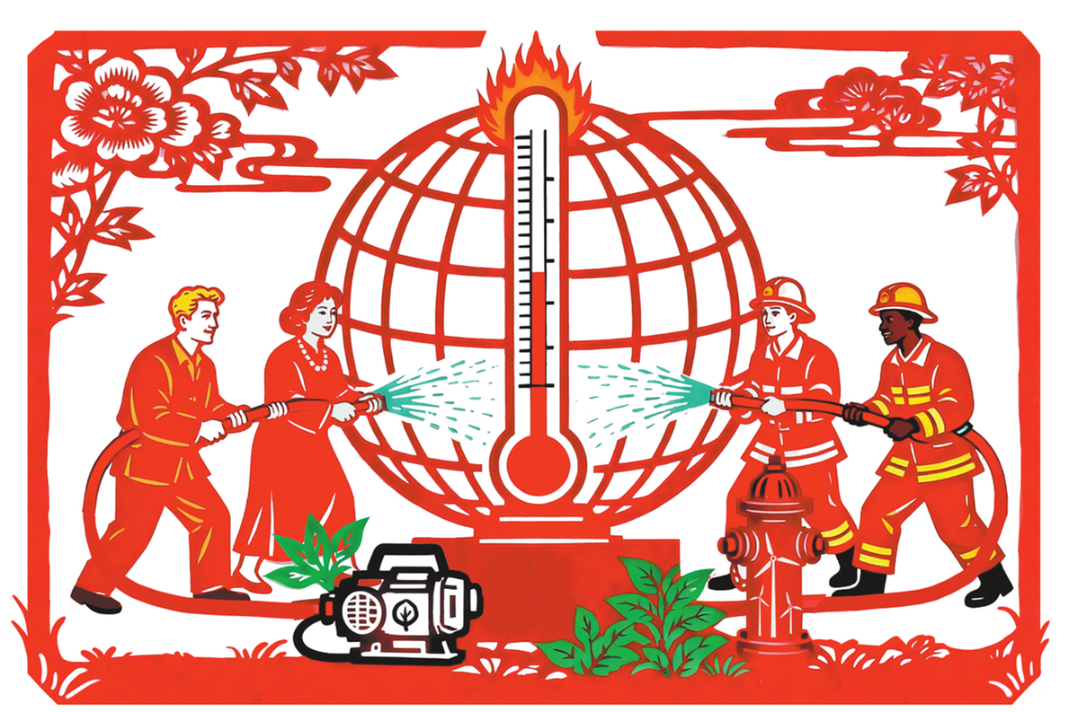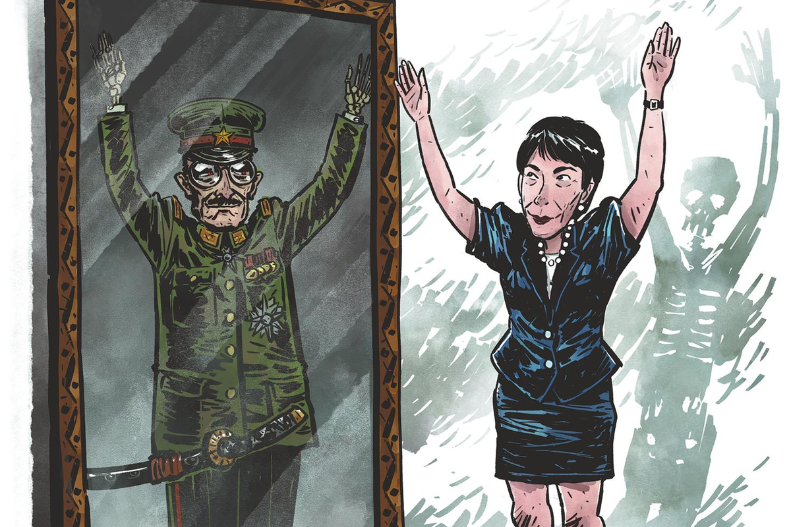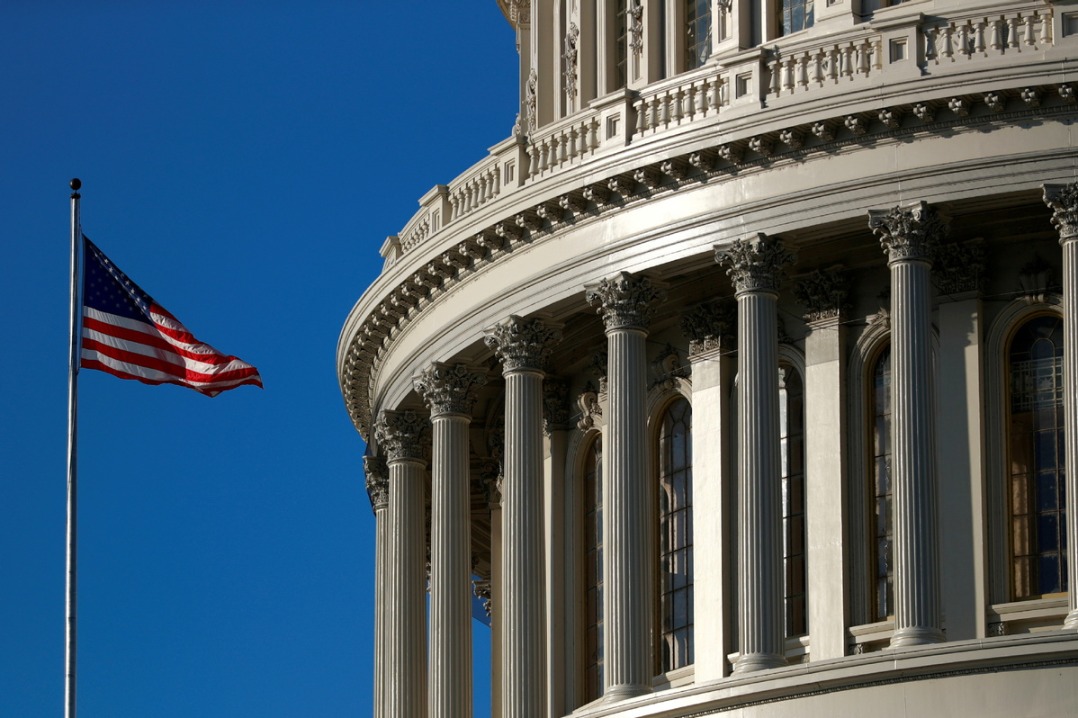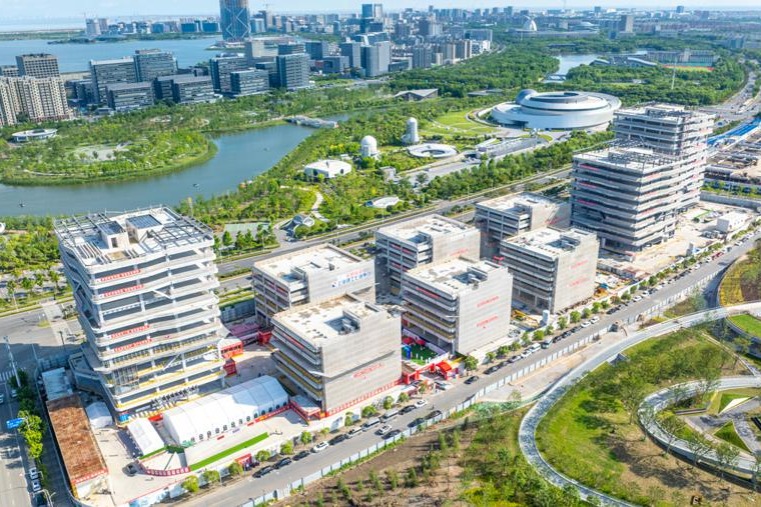Forum: China's private enterprises


Private sector needs the public's help
Editor's note: Despite headwinds from the COVID-19 pandemic and global economic uncertainties, the healthy development of the private sector in China has continuously enhanced the resilience and vitality of its economy, becoming an important force for China's economic growth. Three experts share their views on the issue with China Daily.
The COVID-19 pandemic has had a huge impact on a vast number of private enterprises, especially small and medium-sized enterprises. Yet the private enterprises can use the chance of the lifting of the strict anti-COVID measures to promote innovation and expand their businesses in order to overcome the impact of the pandemic. And the authorities, on their part, should create a favorable environment for private enterprises to thrive.
First, one of the impacts of the pandemic was the rapid decline in demand and a change in the demand structure. The pandemic also disrupted global supply chains, affecting Chinese private companies in particular.
Second, the blind pursuit of economic development resulted in overcapacity in low-end products, causing some structural problems.
And third, because of their smooth sailing since the launch of reform and opening-up, many private enterprises didn't develop enough crisis awareness and hence didn't know how to deal with emergencies like the COVID-19 pandemic.
Such impacts, however, are temporary, and China's private sector still has a promising future. Also, despite the strict prevention and control measures, enterprises across the country had resumed production by the middle or toward the end of 2020. That's why while countries around the world were struggling to contain the spread of the novel coronavirus, China had resumed economic activities.
Besides, private SMEs are in a relatively good position to intensify business activities as the economy recovers, simply because China's socialist market economy allows the market to play a decisive role in the allocation of resources with the government taking effective measures, including implementing favorable policies, to boost growth.
Given the present economic climate, private entrepreneurs should have confidence in the socialist market economy and respond to the challenges. The socialist market economy allocates resources — which are limited — more reasonably and efficiently, and defuse the bubbles in different sectors during an economic downturn. In particular, it can direct the resources to more efficient industries, and thus ensure the laggards are weeded out of the market in the overall interest of society.
Fair competition inspires people to use creative, and yet honest, means to succeed in the market. So entrepreneurs should use tough competition as an opportunity and rise to the challenge. Big, successful enterprises were not built in a day. They all went through struggles, and ups and downs, before achieving success. So entrepreneurs can't hope to enjoy the benefits of the market without facing competition.
Socialism with Chinese characteristics has entered a new era, so has China's economy. China has replaced the quantitative growth model with a high-quality development model. This change, along with the impact of the pandemic, will lead to restructuring of industries and supply chains. Private companies should use this as an opportunity for industrial upgrading.
Moreover, an economic downturn could also turn a "crisis" into an "opportunity" to promote innovation, which incidentally can help China achieve sustainable development. As for enterprises, especially SMEs, they should use the government's policies to boost their businesses.
To ensure that the private sector thrives, the government should fully implement favorable policies, ease the burden on private businesses and make financing more easily available to the SMEs. The government should also remove the obstacles preventing the resumption of work and production, because something obstructing even just one link of the supply or industry chains will affect their overall efficiency.
It is also significant to boost domestic demand, which in turn will boost economic growth as well as make up for the shortcomings in the industry chains. Demand is shrinking in China because of the rise in unemployment and decline in incomes. To address the problem and increase consumption, the authorities should take measures to spur investment and issue consumption coupons.
Also, to help private enterprises to thrive, it is necessary to create a good environment, an environment in which production and transaction costs are relatively low, public services are good, social resources are accessible, private property rights are protected, infrastructure is developed, and innovation is appreciated and promoted. After all, a good business environment can produce thousands of entrepreneurs, and thousands of entrepreneurs can help improve the business environment.
The views don't necessarily represent those of China Daily.
The author is a member of the academic committee at the Research Center for Socialist Political Economics with Chinese Characteristics, Renmin University of China.
Tax- and fee-cut policy sustainable
The Chinese government has been cutting taxes and fees since 2018 to reduce the burden of enterprises so they can expand their businesses and thus help boost the economy. And in 2021, the Central Economic Work Conference encouraged more value-added tax (VAT) credit refunds to maintain microeconomic stability.
Comprising tax cuts and VAT credit refunds, the favorable package has become an important part of China's microeconomic and fiscal policy, which is aimed at deepening supply-side structural reform, promoting high-quality development, easing the burden on enterprises and energizing the market players.
According to the State Taxation Administration, as of Nov 11, 2022, the new tax and fee reductions, VAT credit refunds, and tax and fee deferrals had exceeded 3.7 trillion yuan ($537.63 billion). Among them, taxpayers enjoyed 789.6 billion yuan in tax cuts, over 2.3 trillion yuan in VAT credit refunds — 3.5 times that of last year — and 679.7 billion yuan in tax and fee deferrals.
These favorable policies have increased the flow of money for small and medium-sized enterprises, thus easing the pressure on them and offering them an opportunity to boost their competitiveness and promote innovation.
But the tax and fee cuts also have increased the government's fiscal burden. Worse, governments at all levels are under immense financial pressure because of the COVID-19 pandemic. After all, in the almost three years since the pandemic broke out, the revenues of the central, as well as all provincial, city and local governments have increased on average by only 1.27 percent. In contrast, the growth rate of tax and fee cuts was as high as 62.95 percent during the same period. No wonder it is becoming increasingly difficult for fiscal revenue to support the tax and fee cut policy.
But the above difficulties are temporary, caused mainly by the pandemic. With the easing of the anti-pandemic policy, China's economy will be firmly on the recovery track and thus be able to sustain the tax and fee reduction policy.
Take for example the VAT credit refunds, which account for the biggest percentage of the total sum. By refunding taxes on goods that haven't been sold, VAT credit refunds can ease the constraints created by the slow trickle of cash on the company, shorten the idle time of money, and improve the efficiency of capital.
Besides, as the economy recovers, enterprises with unsold goods will soon clear their inventories and make some profits and therefore can help to gradually return the early tax to the government. Thus, VAT credit refunds will provide timely support to the companies hit hard by the pandemic and yet they will not shrink the space for fiscal revenue.
Based on my research, from April to September last year, 55 percent of enterprises have repaid part of the early tax refunds and 26 percent have repaid the full amount. The manufacturing, wholesale and retail sectors have done better than the transportation and hospitality industries in terms of repaying the tax refunds. Still, the repayments are well below expectations. For example, by the end of September, companies had repaid only about 200 billion yuan, merely 10 percent of the previous tax refunds, to the tax authorities.
The good news is that it is relatively easy for micro, small and medium-sized enterprises (MSMEs) to repay the tax refunds much faster. Despite being a mainstay of tax reimbursements, MSMEs have gradually emerged out of trouble and spurred the market. In turn they can contribute to the fiscal revenue by paying due taxes in the future.
Therefore, China needs to further improve the tax and fee reduction program, and implement proactive fiscal policy to energize enterprises, particularly MSMEs.
First, it is important to use algorithms to help governments at all levels constantly monitor tax reimbursements, and conduct stress tests on finance to reduce risks and safeguard people's livelihoods. And national and provincial fiscal departments should share the cost of tax refunds for some poor areas in cities and counties, and ease their financial strains.
Second, it is important to support MSMEs using VAT credit refunds. The policy has proved highly effective for MSMEs, for many of them have overcome all the odds, with some paying back the tax and credit refunds. VAT credit refunds have the potential to not only alleviate the hardships of MSMEs, but also make fiscal policy more sustainable.
Third, there is a need to strengthen supervision of some big businesses to ensure the tax and credit refunds can be recovered fully and timely. Some companies have immensely benefited from huge amounts of tax and credit refunds but paid nothing or little to the tax and financial authorities, making the tax and fee cut policy financially unsustainable. Thus, strict supervision of enterprises is needed to root out potential risks and get the repayments on time.
The views don't necessarily represent those of China Daily.
The author is associate director of the School of International Trade and Economics, University of International Business and Economics.
Chinese economy eyes reform, opening-up and turnaround in 2023
After a year of domestic economic volatility and international turmoil, China is expected to focus on economic growth this year, which means the country will further deepen reform and expand opening-up. In fact, judging by the Central Economic Work Conference held in Beijing last month and the speeches of the Chinese leaders, the top policymakers will indeed focus on economic growth, with the aim to restore the pre-pandemic high growth environment.
The Economist magazine has called it "this year's biggest economic event". But as always, the devil is in the details: How do policy authorities plan to stimulate private sector growth?
In 2023, China will tackle growth challenges with its "dual circulation" development paradigm. While external circulation (or foreign trade) will deepen regional and international trade and investment ties, internal circulation (or the domestic economy) will seek to accelerate domestic demand.
Now that most of the COVID-19 restrictions have been lifted, the government will implement a variety of measures to boost consumption. The idea is to increase the incomes of urban and rural residents so they can help boost the housing sector, raise new energy vehicles' sales, and improve eldercare.
But the momentum is on the supply side, particularly infrastructure investment. Government incentives seek to increase financing, especially by encouraging more private capital to participate in large national projects on energy, water, transportation and data centers, among others.
As such, fiscal support will be targeted and focused, whereas monetary policy is likely to remain cautious and neutral until the end of the US Federal Reserve's tightening. In turn, sectoral success is predicated on three critical areas: COVID-19, the technology sector and the property market.
With the lifting of the COVID-19 restrictions, stringent top-down restrictions are effectively giving way to bottom-up responses. The faster China can avoid the kind of short-term reactions and disruptions, which are typical of the transition, the speedier will be the return to the growth momentum.
In 2023, China could outpace many other emerging economies, with its secular long-term trend growth around 4 to 5 percent through the 2020s.
In the technology sector, the efforts of the policymakers to foster more competition began with a fast and broad momentum last year. Such initiatives will cultivate Chinese "little giants" and particularly small and medium-sized enterprises. In Germany, Mittelstand SMEs have proved resilient during periods of rapid economic change. After all, SMEs are less capital-intensive than big business but provide broader job opportunities in the long run.
But as John Maynard Keynes once put it, "in the long run, we will all be dead". It is vital to pace new technology-regulation regimes so that they will foster steady growth rather than cause disruptions or create bottlenecks. After all, Chinese world-class technology giants from Huawei to ByteDance also have to cope with Washington's suppressive strategies that exploit geopolitics to foster the United States' ailing competitiveness.
After half a decade of volatility, even turmoil, the Chinese property market could be heading toward a turnaround. In real estate, the new support measures, particularly the government's 16-point recovery plan, will contribute to stabilization. In 2022, property sales might have fallen by 25 percent or so. But in 2023, it might be only by 5-10 percent.
While highly leveraged private developers continue to struggle, higher-quality developers will gain in strength over time. As S&P Global Ratings recently concluded, the rising dominance of State-owned developers means the Chinese market will be more stable with more focus on completing unfinished housing units.
In the past decade, the US steadily escalated "great power competition" with China. Having little to do with economic efficiency, it promotes destabilization aimed at weakening China, even at the expense of US welfare and big business. Purposely defined ambiguously, the "enhanced" US restrictions on the sale of advanced semiconductors to China are a prime example. They will hit the hardest the biggest global technology giants in the US, and in the Republic of Korea and the Chinese island of Taiwan.
In contrast, China continues to shun trade protectionism and expansive geopolitics. The quest for global economic cooperation and development is central to China's external circulation. It will deepen trade and investment ties, especially with the member states of the Regional Comprehensive Economic Partnership, which could be a game changer as the RCEP bloc accounts for almost one-third of China's total trade value.
Despite trade protectionism in the West, the Belt and Road Initiative will promote steady progress on the back of recovery in Southeast Asia. China's trade with the Association of Southeast Asian Nations is growing two-three times faster relative to that with the European Union and the US. China's goal is also to expand bilateral trade with the ROK and Japan in spite of political and strategic differences.
The Belt and Road projects are also intensifying from South Asia and Eurasia to the Middle East and Africa. And in Latin America, the third presidency of Luiz Inácio Lula da Silva in Brazil and the rise of other progressive leaders hold a promise for more multipolar world trade.
Finally, as consumption in China is about to increase, the use of the renminbi as a settlement currency will gradually increase with and within these trade blocs.
The risk of recession has cast a dark shadow over the US economy. The eurozone is facing a deep recession, Japan's economy is shrinking, and the United Kingdom is struggling with the worst fall in living standards since records began. Consequently, the penchant of their policymakers to increase military expenditure, when their economies can least afford it, is self-destructive.
Ironically, as the overstretched West moves toward closed society and protectionism, China will stay the course of economic reform and opening-up, and high-quality development. So will most of the other large emerging and developing economies. Development is not viable without peace and stability.
The views don't necessarily reflect those of China Daily.
The author is the founder of Difference Group, and has served at the India, China and America Institute (USA), Shanghai Institutes for International Studies (China) and the EU Centre (Singapore).
